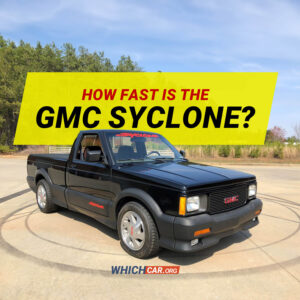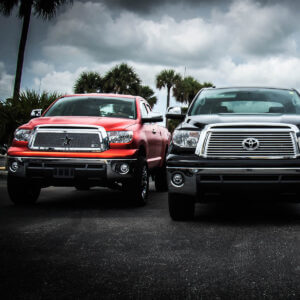What’s the Difference Between Ford Bronco vs Bronco Sport?
We take apart the Ford Bronco and the Ford Bronco Sport, two different SUVs with the same name but big changes, in this in-depth analysis. Even though they all look similar on the outside and play on nostalgia for older Ford trucks, each suv has its own features and functions that make it fit the needs and wants of different people.
Updated: February 29, 2024 // Versus
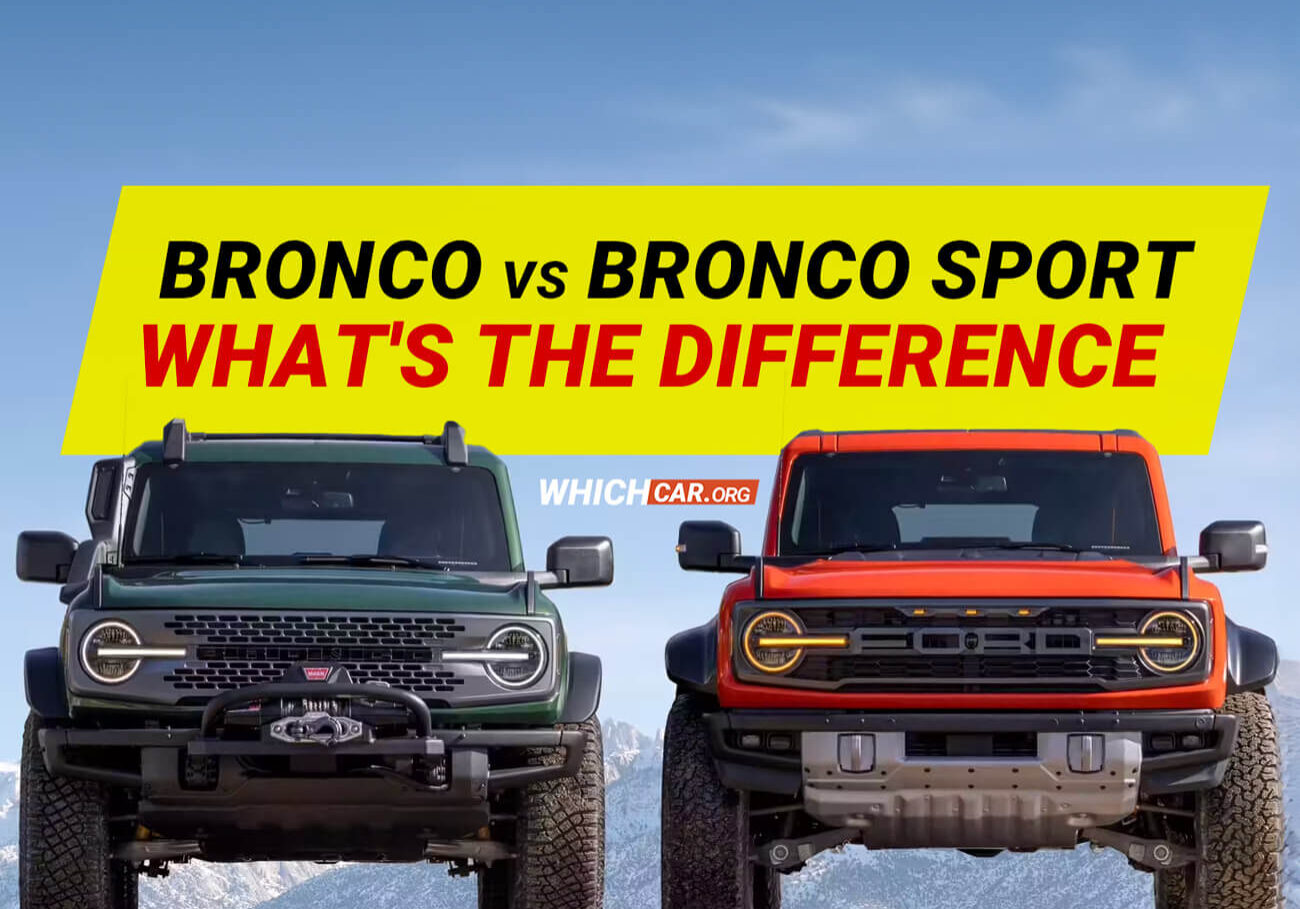
Pricing: Bronco vs. Bronco Sport
When considering pricing, the Ford Bronco Sport emerges as the more budget-friendly option. Starting at a competitive $28,910 (including destination) for the base trim, it presents an attractive entry point for those conscious of their budget. However, for enthusiasts seeking top-tier trims like the Badlands, the price escalates to $38,445.
In contrast, the Ford Bronco, available in both two-door and four-door configurations, starts at $30,795 (including destination) for the two-door model, with the four-door variant beginning at $34,945. Notably, the First Edition trim, equipped with a full suite of off-roading hardware, commands a higher price tag, reaching $62,605. So, the Bronco Sport is more affordable, but the Bronco has more options and better features for people who are ready to spend more.
Exterior Dimensions: Bronco vs. Bronco Sport
The Bronco Sport, measuring 172.7 inches in length, closely resembles compact SUVs like the Honda HR-V and Subaru Crosstrek. In comparison, the two-door Bronco shares a similar length of 173.7 inches, while the four-door Bronco extends further to 189.4 inches, akin to midsize SUVs such as the Jeep Wrangler and Honda Passport.
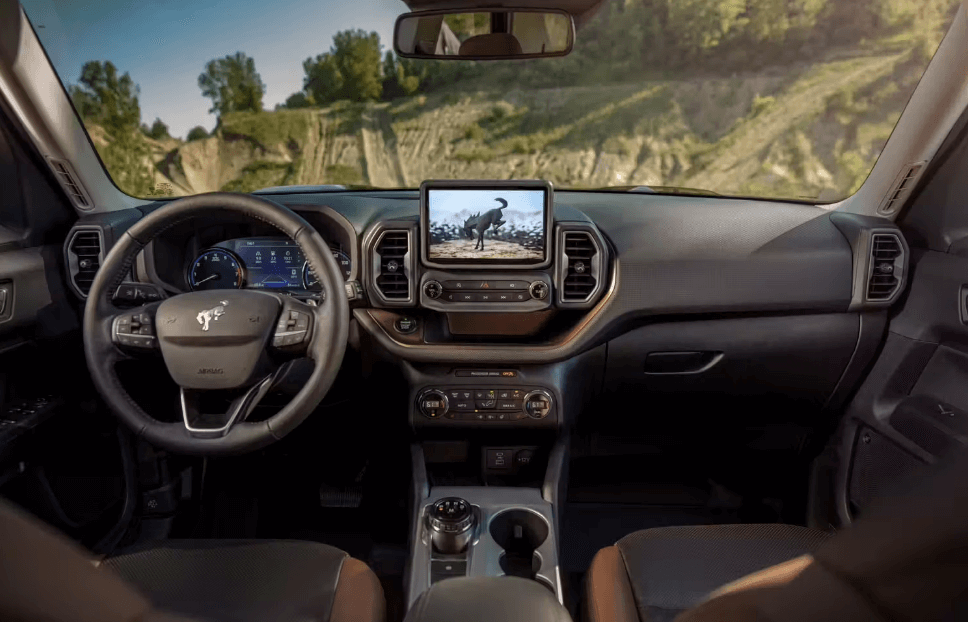
Image Source: Ford
Powertrains and Performance: Bronco vs. Bronco Sport
Both the Bronco and Bronco Sport offer a choice between two powertrains, catering to diverse performance preferences. The base 1.5-liter turbocharged three-cylinder engine in the Bronco Sport makes 181 hp and 190 lb-ft of power, which is pretty good for its size. Opting for the available turbocharged 2.0-liter four-cylinder engine significantly enhances power output to 250 hp and 277 lb-ft, resulting in a brisk acceleration of 0-60 mph in 7.2 seconds.
The Bronco, on the other hand, has more power from both its base and extra engines. The base turbocharged 2.3-liter four-cylinder generates 300 hp and 325 lb-ft, while the optional turbocharged 2.7-liter V6 impresses with 330 hp and 415 lb-ft. Notably, during testing, the Bronco’s V6 achieved a swift 0-60 mph in just 6.7 seconds, highlighting its robust performance capabilities.
Fuel Economy: Bronco vs. Bronco Sport
While the Bronco Sport excels in fuel efficiency, with EPA-estimated ratings of 26 mpg combined for the base engine and 23 mpg combined for the 2.0-liter engine, the larger Bronco prioritizes power over fuel economy. Depending on the design and amount of equipment, the Bronco gets between 17 and 21 mpg on the highway.
Cargo Capacity: Bronco vs. Bronco Sport
For consumers prioritizing cargo space, the Bronco emerges as the favorable choice, offering greater cargo capacity compared to the Bronco Sport. Behind the back seats, the Bronco has 38.3 cubic feet of place for bags and other gear. In contrast, the Bronco Sport offers a slightly lesser capacity of 32.5 cubic feet, with the two-door Bronco further reducing cargo space to 22.4 cubic feet.
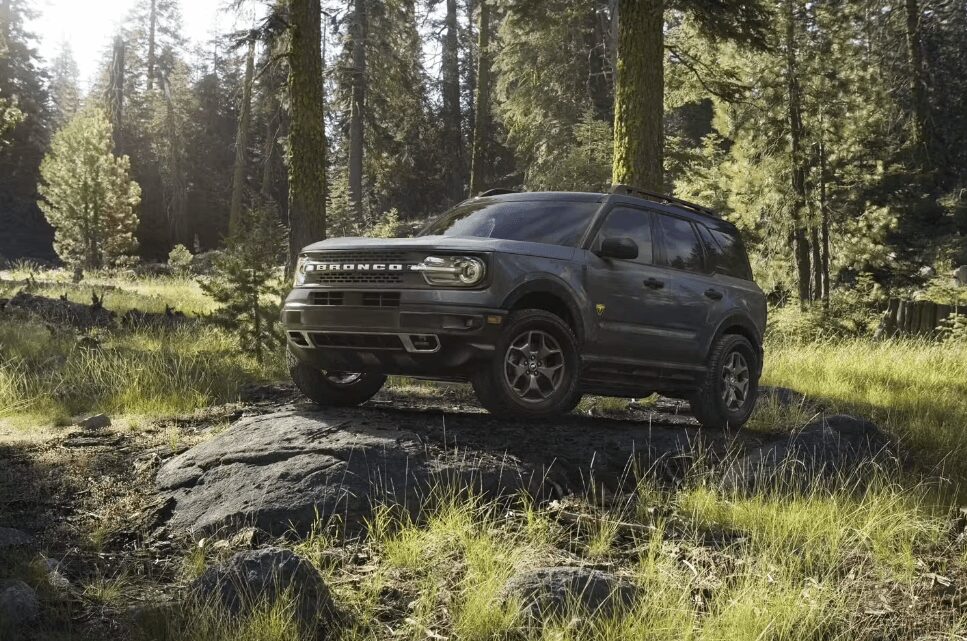
Image Source: Ford
Towing Capacity: Bronco vs. Bronco Sport
In terms of towing capabilities, the body-on-frame construction of the Bronco enhances its towing capacity to 3,500 pounds, surpassing the Bronco Sport’s maximum towing capacity of 2,200 pounds. This difference shows that the Bronco is better for pulling bigger campers or trailers because it can handle like a truck.
Interior: Bronco vs. Bronco Sport
It’s very comfortable and well-made inside the Bronco, thanks to its big cabin and high-quality materials, especially on higher model levels. The Bronco Sport, on the other hand, is more affordable and has better materials and a quieter ride on the highway. The entertainment systems in both cars are high-tech, with tablet screens and smartphone connectivity that make drive more modern for the people inside.
Off-road Capability: Bronco vs. Bronco Sport
The Bronco is better off-road than the Bronco Sport because it has higher ground clearance, more advanced motor choices, and features that were designed to work off-road. Off-road fans who want the most exciting adventures should get a Bronco. Strong front wheels, real four-wheel drive systems, and available locking differentials make it able to handle rough terrain.
Driving Impressions: Bronco vs. Bronco Sport
While the Bronco Sport offers nimble handling and peppy acceleration, the Bronco delivers a more refined driving experience, especially with its available V6 engine and smooth-shifting transmission. Even though it’s bigger, the Bronco is still easy to drive and comfortable on the highway. That makes it a good choice for people who want to be comfortable on the road and be able to go off-road.
Overall, the Ford Bronco and Ford Bronco Sport are two different SUVs that meet different needs and wants. The Bronco Sport is affordable and gets good gas mileage, but the Bronco is faster, can carry more, and can go off-road better. Customers can make smart choices based on their wants and living choices if they know the subtle differences between these two models.

